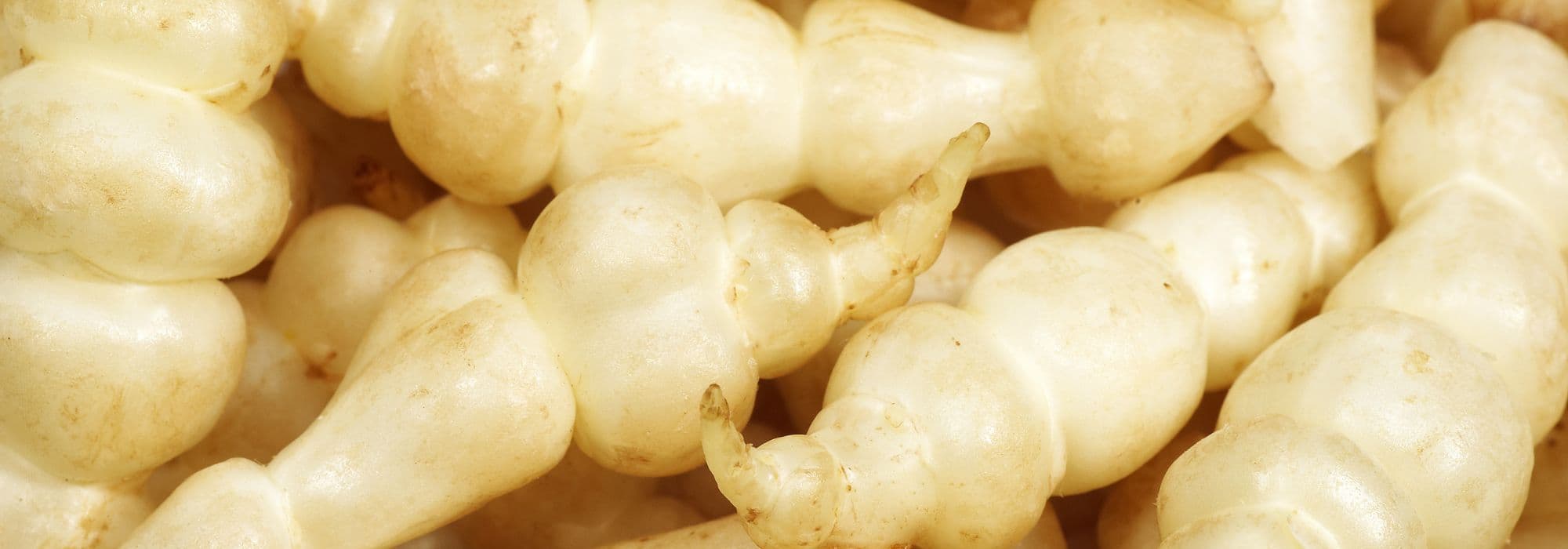
The Chinese artichoke (Stachys affinis): sowing, growing, and harvesting
Contents
The Chinese artichoke in a few words
- The Chinese artichoke is a perennial plant, grown as an annual, which produces creamy-white, swollen, ringed, and twisted tubercles.
- The flesh of these tuberous rootstocks resembles that of the artichoke and salsify.
- It forms a clump of dentate, embossed, and ovate leaves. Its flowering is rare.
- This vegetable requires light, even sandy, well-aerated, and dry soil.
- Chinese artichokes are harvested from November and throughout the winter.
The word from our expert
Considered among the forgotten vegetables, the Chinese artichoke (Stachys affinis) is now recognised as a luxury vegetable. Perhaps because peeling it is often lengthy and tedious. Yet, it deserves a place in our vegetable gardens and on our plates, as its flavour, quite similar to that of artichoke, Jerusalem artichoke, or salsify, is refined and delicate. It is particularly diet-friendly as it contains no lipids.
The pearly white tubercles of the Chinese artichoke grow in strings a few centimetres long. They are plump and consist of a series of fleshy rings. They form on underground stems, somewhat like potatoes. The tubercles should be consumed fairly quickly as they deteriorate when exposed to air. But they are easy to harvest as needed from November and throughout the winter.
The tubercles are planted in spring, early April. Cultivation is straightforward, as is maintenance. Moreover, this vegetable is rarely troubled by pests or diseases.
Hardy, this vegetable is worth (re)discovering!
Description and Botany
Botanical data
- Latin name Stachys affinis syn. tuberosa
- Family Lamiaceae
- Common name Chinese artichoke, Japanese artichoke, knotroot
- Flowering July-August
- Height 30 to 60 cm
- Exposure Sun or partial shade
- Soil type Light, airy, fertile, well-drained and moist
- Hardiness Down to -15°C
The Chinese artichoke (Stachys affinis syn. tuberosa), also commonly known as Japanese artichoke or knotroot, is a root vegetable from the Lamiaceae family, characterised by quadrangular stems and terminal spike flowering, much like mint, lavender, and nepeta…

Botanical illustration
This is a perennial vegetable plant, grown as an annual in our regions, with running rhizomatous roots. Originating from Asia, primarily China, and cultivated in Japan, this herbaceous plant was introduced to Europe in 1880 and later grown by botanist gardeners in Crosne, a town now located in Essonne, southeast of Paris. In 1882, Nisolas-Auguste Paillieux was the first to distribute this vegetable in French kitchen gardens. It quickly became popular among market gardeners and appeared on the stalls of seasonal vendors at very reasonable prices.
The term “stachys” comes from the Greek “stachus,” meaning “spike,” while “affinis” derives from the Latin “adfinis,” meaning “close, similar.” The Chinese artichoke is also found under the Latin name Stachys tuberosa, with tuberosa referring to the shape of its cylindrical, knotted chains.
The Chinese artichoke produces tuberous roots, composed of knotted chains of slender, fleshy, ringed tubercles. These tubercles, measuring 5 to 7 cm, are covered with an exceptionally thin, creamy-white skin. Chinese artichokes have a delicate flavour, somewhere between artichoke and salsify, with a slight hint of roasted hazelnut and Jerusalem artichoke. They are best enjoyed cooked.
This fast-growing herbaceous plant forms a clump 30 to 60 cm tall, relatively dense and compact, with a spreading habit. It tends to sprawl, especially as it branches in all directions, featuring quadrangular stems bearing deciduous, opposite, ovate, and long-petiolate leaves. Slightly crinkled and crenate along the edges, the leaves display a glaucous green hue. They are rough to the touch and measure 5 to 10 cm in length and 2.5 cm in width.
Its flowering is rarely observed in France. It occurs in mid-summer, between July and August. The flowers are bilabiate, with a deep pinkish-white colour. A more intense pink line runs through the centre.
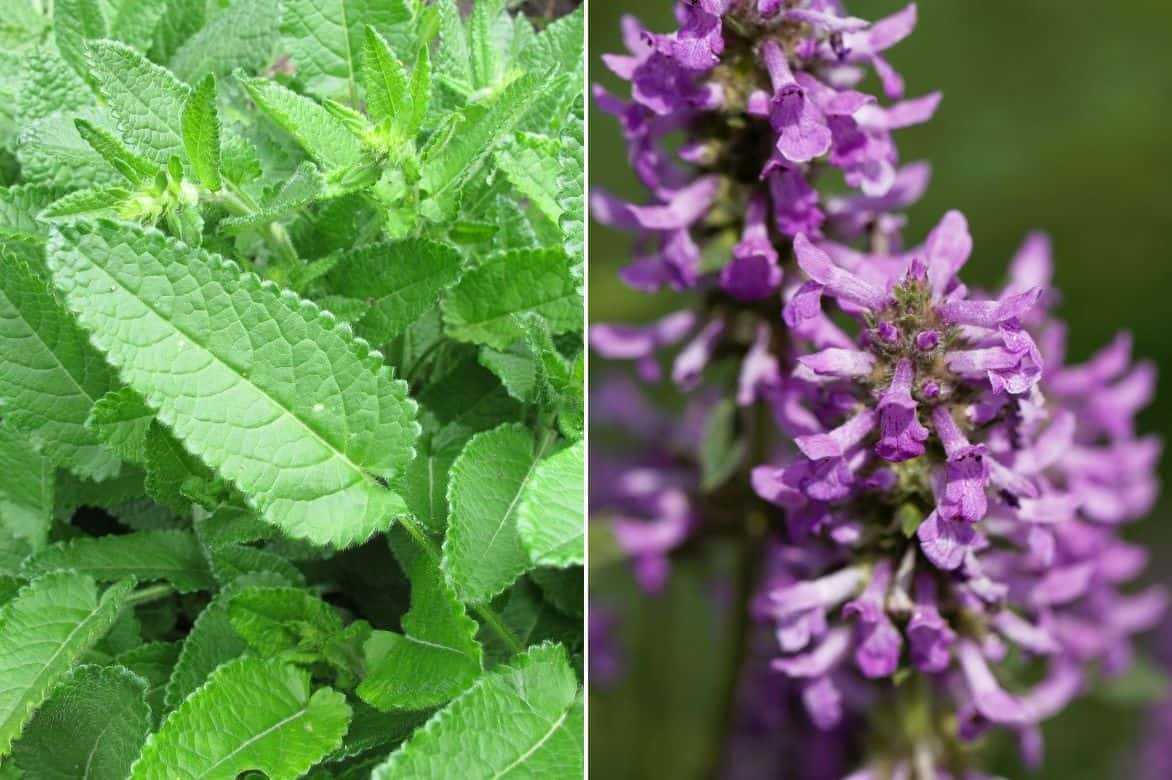
Leaves and flowers of the Japanese artichoke
The rhizomes of this plant, grown as an annual in our regions, are hardy down to -15°C. However, the foliage disappears in winter.
Main species and varieties
Only the type species is cultivated here.
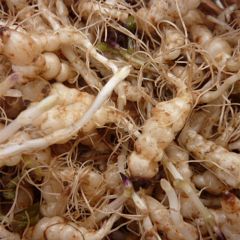
Stachys affinis
- Hauteur à maturité 40 cm
Planting Chinese artichokes
Where to Plant It?
The tubercles of Japanese artichoke should be planted in light, even sandy, dry, and well-aerated soil. It should crumble perfectly. In terms of soil type, all varieties are suitable as long as they are light to facilitate the harvest. Heavy or clayey soils must absolutely be lightened with sand. Indeed, in heavy soils, the artichokes, formed of small balls stuck together, will be difficult to harvest and clean due to their small size.
A cool to slightly moist soil, rich in humus, will also suit it.
It prefers a sunny location but can tolerate partial shade.
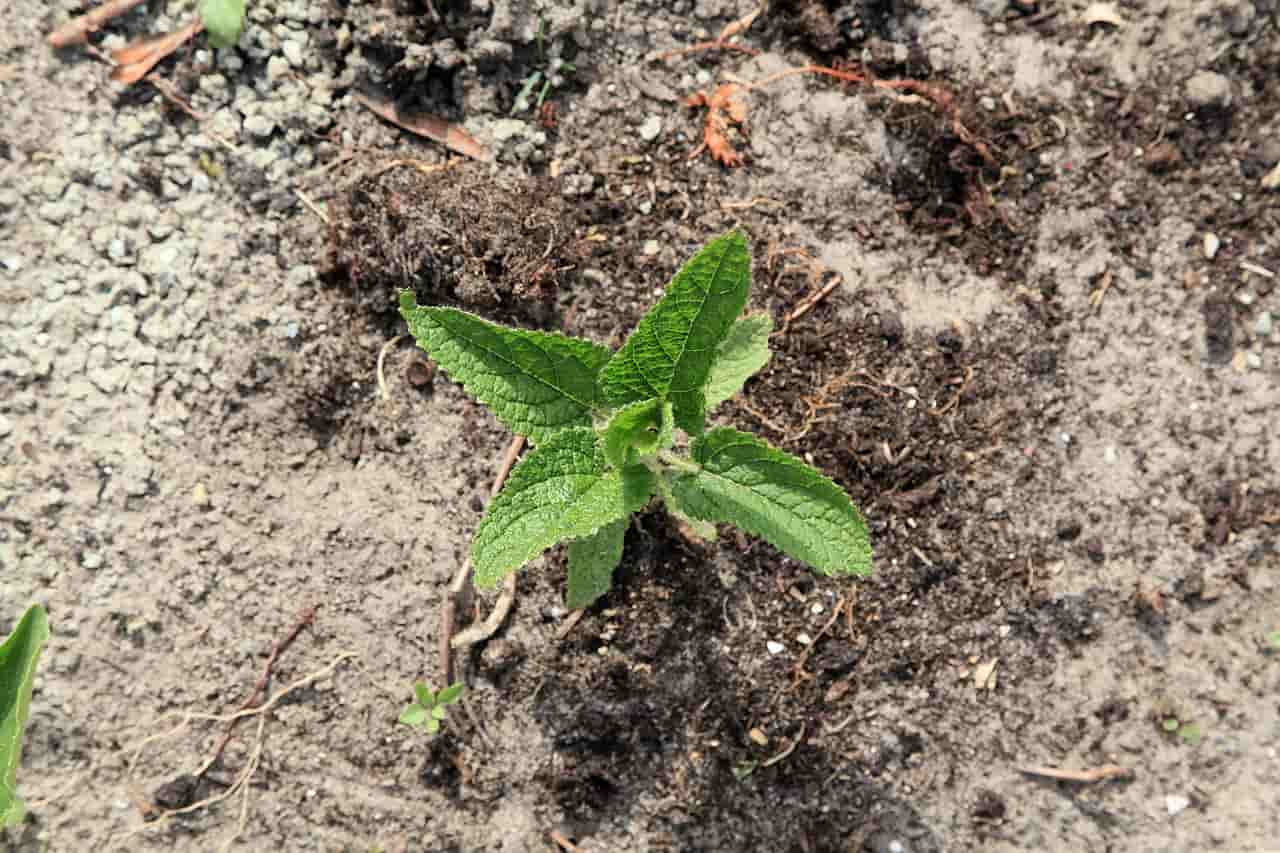
© Frantz Vincentz
When to Plant It?
The planting of Japanese artichoke tubercles takes place, depending on the region, in March or April, or even February if the weather is mild. Beyond April, it is too late to plant them, even though artichokes benefit from rapid growth. It takes about 7 to 8 months before the first harvest.
How to Plant It?
Japanese artichokes are cultivated in ranks, much like potatoes, by planting tubercles:
- Work the soil with a fork to aerate it well and remove weeds and stones
- Mark out ranks spaced 35 to 40 cm apart
- Using a bulb planter, make holes 15 cm deep, spaced 15 to 20 cm apart
- Place 2 to 3 tubercles in each hole
- Fill the hole without compacting
- Water.
You can also plant the tubercles in buckets under cover as early as February. They will be transplanted into the ground in April.
Maintenance, Diseases, and Companion Planting
Growing and maintaining Chinese artichokes is not very difficult, although they do require some care.
In dry weather and during droughts, watering will be necessary. Otherwise, Chinese artichokes do not need water.
In May-June, it is recommended to hoe to remove weeds. Take the opportunity to earth up the young plants. Mounding soil around the clump will facilitate tubercle formation and prevent the plant from sprawling too much. The tubercles grow near the surface of the soil, so be careful not to damage them.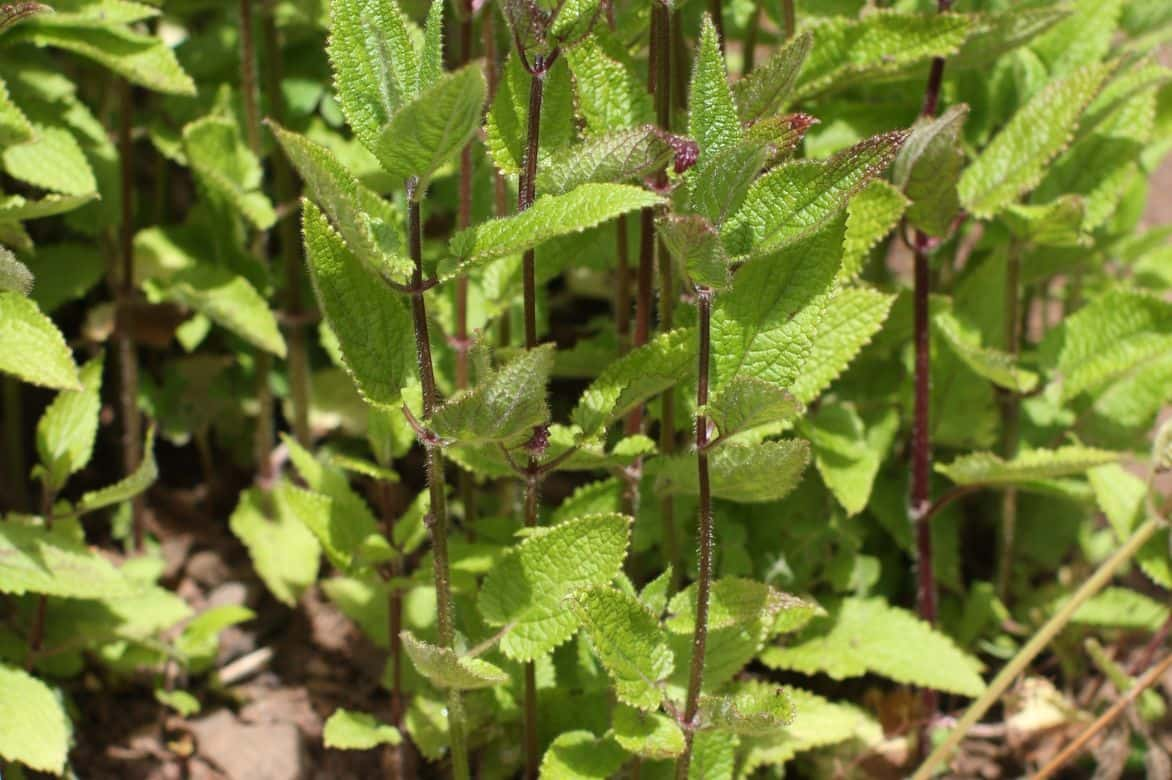
Next, it is recommended to install a good mulch, for several reasons: it will keep the soil cool and prevent weed proliferation. Similarly, since the harvest of Chinese artichokes spans a long winter period, the mulch prevents the soil from freezing too much. This makes harvesting easier. You can create your mulch layer, at least 20 cm thick, using straw and dead leaves, possibly mixed with well-dried grass clippings.
Like potatoes, Chinese artichokes can be paired with celeriac, cabbages, spinach, peas, and beans.
Few pests are known to attack Chinese artichokes, apart from perhaps slugs, which eat the young shoots.
Harvest and storage
When and How to Harvest Chinese Artichokes?
- The harvest: Harvesting Chinese artichokes begins in November and continues throughout winter, until February, as needed. The foliage should start to wilt before disappearing. This is why mulching is important, as it helps you locate the young plants. You can even add burlap sacks to insulate the rootstocks from the cold in regions with harsh winters. Harvesting is done by uprooting the young plants with a beak spade. The yield ranges from 250 to 500 g per young plant in favourable soil. Since the rootstocks are very frost-resistant, any forgotten in the soil will regrow the following year. You can also store a few, protected from frost, in slightly damp sand, to plant from February until early April.
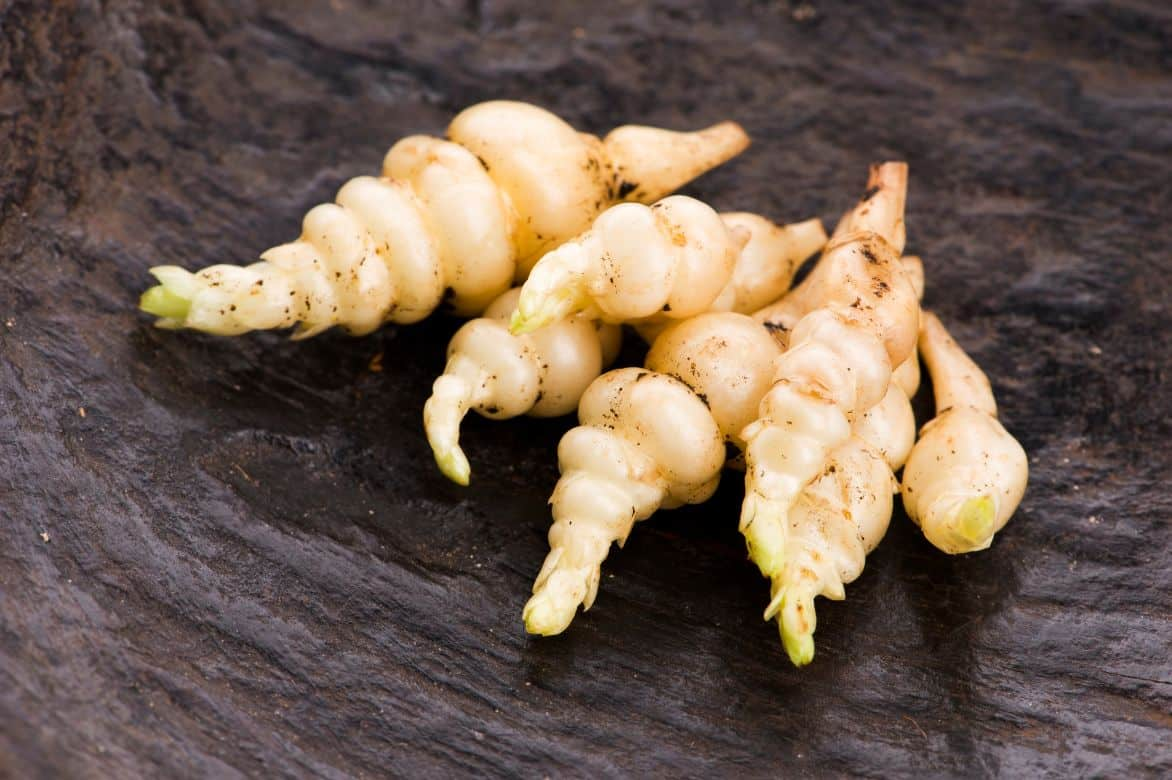
- Storage: once out of the soil, Chinese artichokes are very delicate and soften quickly. They should be consumed very quickly, within 2 or 3 days at most.
Uses and nutritional benefits
Since it is impossible to peel Chinese artichokes, the method to remove the skin involves rubbing them in a coarse cloth after washing them. You can also scrub them with a soft-bristled brush. Then, simply rinse them in lemon-infused water to remove any remaining epidermis.
Chinese artichokes are mainly eaten steamed, simply blanched for 10 minutes, or sautéed. They can also be cooked in a gratin. They pair wonderfully with meats and game. In Japan, they are also enjoyed pickled in vinegar.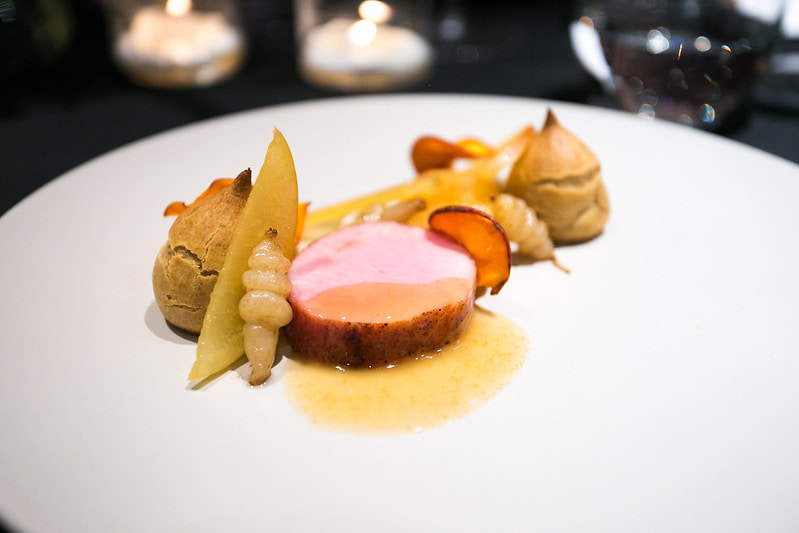
Chinese artichokes are rich in dietary fibre, essential for the digestive system. However, they contain stachyose, which can make them hard to digest. They are also a source of plant-based proteins and nutrients like potassium, calcium, and phosphorus. Additionally, they are very nourishing and very low in fat.
Frequently asked questions
-
Can Chinese artichokes be frozen?
Since crosnes only keep for 2 to 3 days in the fridge, it is entirely possible to freeze them if the harvest is abundant. Simply wash them without removing the skin.
-
How to easily peel Chinese artichokes?
The epidermis is very thin, and the crosnes are so twisted that it's impossible to peel them with a knife. Simply place them in a cloth, optionally with a handful of coarse salt, and rub them between your hands. Then, rinse them under water, and they're ready to be cooked.
- Subscribe!
- Contents































Comments